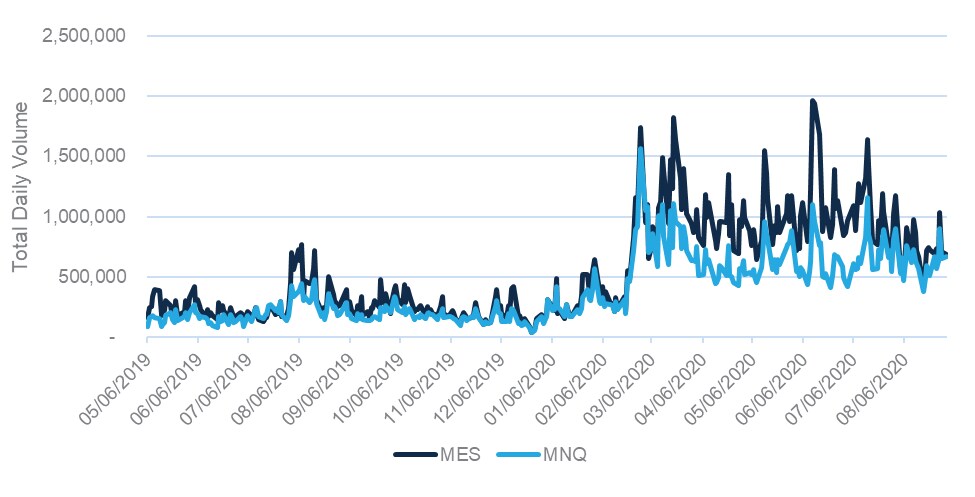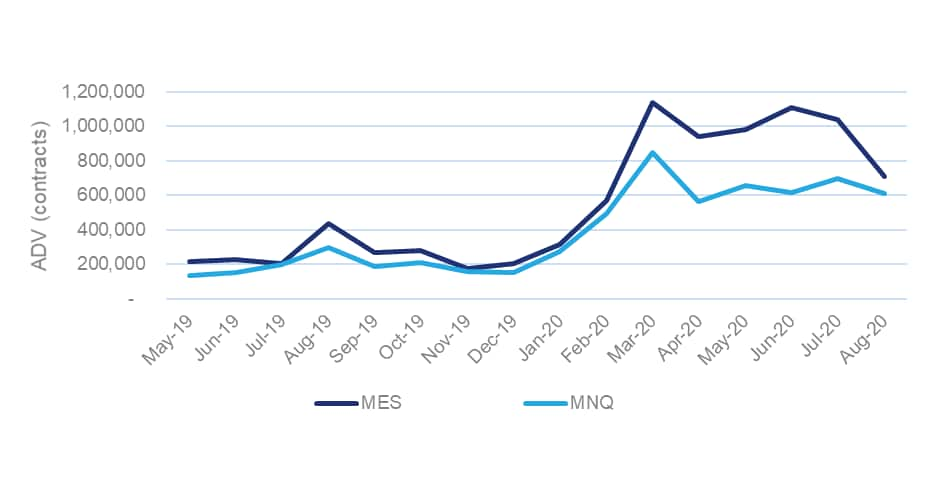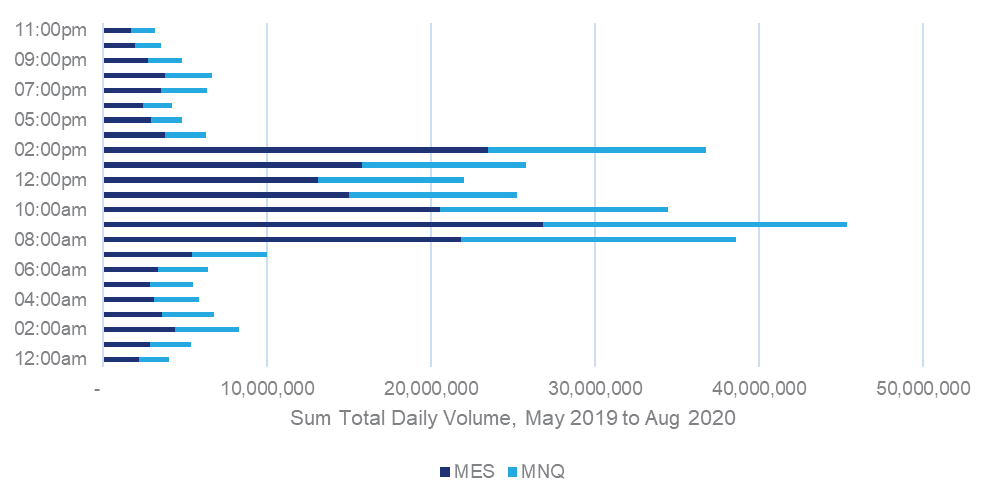At the end of August, active traders in two major indexes – the S&P 500 and Nasdaq 100 – were provided a new tool to manage equity market risk. Micro E-mini S&P 500 options and Micro E-mini Nasdaq-100 options allow traders looking to hedge market-moving events the flexibility to execute strategies around the clock, and at lower cost than standard E-mini contracts.
These options have shown strong growth already, with over 157,000 traded in the first month they launched. It was the success of the underlying contract, Micro E-mini futures, that made options adoption possible. The story of their wide adoption and growth is to see a market meeting a need of traders across the globe.
A More Approachable Contract
Micro E-mini S&P 500 futures (MES) and Micro E-mini Nasdaq-100 futures (MNQ) were introduced to the market on May 6, 2019 with a contract value equal to 1/10th that of the classic E-mini contracts. The fractional value of the Micro E-mini futures contracts makes them a more approachable contract for market participants to access the most active global equity index benchmarks.
Over the past fifteen months, both the MES and MNQ futures contracts have shown significant growth with daily volumes reaching heights of nearly two million contracts for the Micro E-mini S&P 500 and just over a million and a half contracts for the Micro E-mini Nasdaq-100, as the chart below illustrates.

Beginning in March 2020, volumes surged in both futures products. The chart below illustrates how Micro E-mini futures monthly average daily volume gained momentum at the start of 2020.

Heightened volatility from the COVID-19 global pandemic created record-setting daily volume for both Micro E-mini S&P 500 and Nasdaq-100 futures. In March, MES and MNQ futures volume reached a high of 1,141,164 and 849,208, respectively. These record-breaking months were followed by the second-highest monthly volume observations in June for MES with 1,107,677 and in July for MNQ with 698,991.
Trading Around the Clock
Additionally, Micro E-mini futures have performed extremely well during extended trading hours (ETH), which occur from the hours of 4 p.m. to 8:30 a.m. CST. Micro E-mini S&P 500 futures have experienced 25% of their total daily volume occurring in ETH; similarly, Micro E-mini Nasdaq-100 futures have experienced 30% of their total daily volume occurring in ETH. With around the clock trading, liquidity is robust in these products across the globe.
The chart below illustrates the summed total daily volume of trading in both futures products from May 2019 through August 2020, broken down by hour in CST. It is evident that most trading takes place during regular trading hours (RTH), between the hours of 8 a.m. and 3 p.m. CST; however, volume in ETH hours remains at least a quarter of all total volume in both products.

Daily volume around the clock for Micro E-mini S&P 500 and Nasdaq futures.
Further elaborating on the significance of ETH for MES and MNQ futures, country of origin shows consistent global adoption of these products. Depending on the time of trade, countries can be bucketed into three different zones: ETH in Asia, ETH in Europe, and RTH.
It is common for countries, say Canada, to trade in all three zones; on the other hand, there are instances of a country only trading in a singular zone. Whatever the trader’s preference, MES and MNQ futures offer the ability to flexibly trade around the world at any time. This is evidenced by comparing the number of countries trading MES and MNQ futures in the three different zones since May 2019.

People in hundreds of countries have traded Micro E-mini futures.
In 2019, 168 countries traded in the ETH-Asia zone, 182 in the ETH-Europe zone, and 205 in the RTH zone. Furthermore, in 2020, adoption has been consistent across the three zones, with 96 countries trading in ETH-Asia, 98 in ETH-Europe, and 106 in RTH.
These metrics imply significant strength and global adoption in Micro E-mini futures, paving the way for the introduction of options on these products. It is also a sign that the adoption of Micro E-minis has moved beyond a trend into a more permanent place in trader portfolios.
To learn more about futures and options, go to Benzinga’s futures and options education resource.
© 2025 Benzinga.com. Benzinga does not provide investment advice. All rights reserved.
Trade confidently with insights and alerts from analyst ratings, free reports and breaking news that affects the stocks you care about.